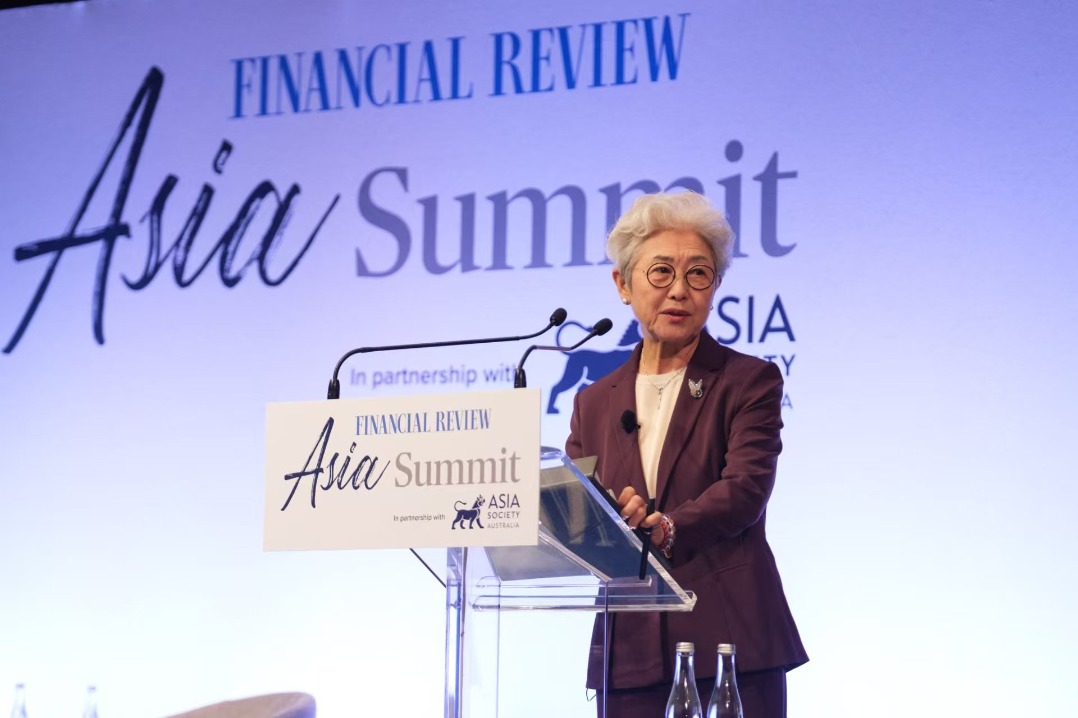Double efforts to reduce food loss, waste


President Xi Jinping has reiterated China's commitment to drastically reduce food waste. In a recent speech, announcing the Clean Plate 2.0 campaign, Xi emphasized the importance of introducing legislation and regulations, and establishing a long-term mechanism to prevent food waste. The Clean Plate 2.0 campaign should be welcomed, not least because there is an urgent need to tackle food loss and waste both in China and across the world.
The United Nations Food and Agriculture Organization estimates that about 30 percent of all the food produced around the world is either lost or wasted each year. This is equivalent to 1.3 billion tons of food, $1 trillion in economic costs.
Nutrient loss weakens fight against hunger
Food loss and waste also imply loss of nutrients, due to the loss and waste of vegetables, fruits, and animal source foods that have essential micronutrients which the human body needs. Considering the micronutrient deficiency worldwide, nutrient losses could have a significant impact on the efforts to reduce hidden hunger and undernutrition.
Food loss and waste contributes to climate change, too, accounting for about 8 percent of annual global greenhouse gas emissions. If food loss and waste were a country, it would be the world's third-largest emitter.
China is the largest food producer and consumer. Thus, it would not be surprising if a huge amount of food is lost and wasted in the country. While the exact amount of food waste and loss in China is not known, the FAO says China loses more than 8 percent of foods from farm gate to wholesale markets. There is also substantial waste at the retail level, and by the hospitality sector and consumers.
A recent survey by the Chinese Academy of Sciences and World Wide Fund for Nature estimated that 17-19 million tons of food is wasted annually at restaurants alone, equivalent to the annual food consumption of 30-50 million people. Therefore, urgent actions must be taken to prevent this loss.
As a first step, China should develop a national vision and strategy for reducing food loss and waste. The UN Sustainable Development Goal 12.3 calls for cutting per capita global food waste by half at the retail and consumer levels, and reducing food losses in production and supply chains by 2030.
China has committed to the SDGs, and it could show global leadership by setting an even more ambitious goal, for example, by aiming to reduce food loss and waste by two-thirds from 2020 to 2030. On the basis of the vision, a national strategy based on the value chains should be developed by incorporating plans for investment, changes in laws, regulations and governance, as well as engagement plans with the private sector and civil societies.
It is likely that most food loss in China occurs during production and storage. Therefore, investing in better infrastructure to improve storage, processing and transportation is critical. Such investment could have very high economic returns, as International Food Policy Research Institute studies show that investment in projects to reduce food loss and waste could have a 6-15 percent rate of return. This is two times higher than other types of investments. But only 5 percent of agricultural research funding is currently spent on research on how to reduce post-harvest losses. Such funding needs to be increased significantly.
Reprioritizing subsidies could reduce food waste
Agricultural subsidies lead to overproduction of certain types of foods and thus increase waste. Reprioritizing and refocusing these subsidies to support smallholders' handling and storage capacity and supply chain logistics could improve those smallholders' income, reduce food loss, and increase the overall efficiency of the value chains.
As China becomes more urbanized, food waste is likely to increase at the retail and consumer levels. Hence, steps to facilitate food donations, improve food date labeling, and better educate consumers is vital. Changing behaviors regarding food waste at the dining table, particularly in restaurants, is important too, as on average, Chinese people waste 11.3 percent of the food when dining out.
But more importantly, consumers should be made aware of the best practices in safe food storage, package dating, and household as well as societal benefits of reducing food waste so they can start reducing food waste at home. And retailers should be discouraged from following unnecessary standards for the color, shape and size of fruits and vegetables which result in food waste.
The role of the private sector is crucial, particularly those organizations involved in transportation, processing, packing, wholesale and retail services. More than 30 of the world's largest global companies have set targets to reduce food loss and waste by half. But since Chinese companies have been less active in this sphere, financial incentives as well as laws and regulations for the private sector are needed to make them take measures to reduce food loss and waste.
Measurement helps understand key issues
More efforts also need to be made to collect timely and accurate data on food loss and waste, and the national statistical system must embrace this key indicator. Measurement is vital to reduce food loss and waste-as it helps better understand where the key issues are, so action can be taken to resolve them.
At present, governments at different levels and companies do not quantify how much or where food is being lost or wasted. So China should also consider setting up a technical or knowledge platform, similar to IFPRI, and the FAO Technical Platform on Food Loss and Waste, to facilitate calculating and preventing or reducing national, and regional level food loss and waste. Among other things, such a platform would help users navigate available data and learn the best practices in quantification.
Fan Shenggen is a chair professor at China Agricultural University, and Andrew Steer is the president of World Resources Institute.
The views don't necessarily reflect those of China Daily.



































